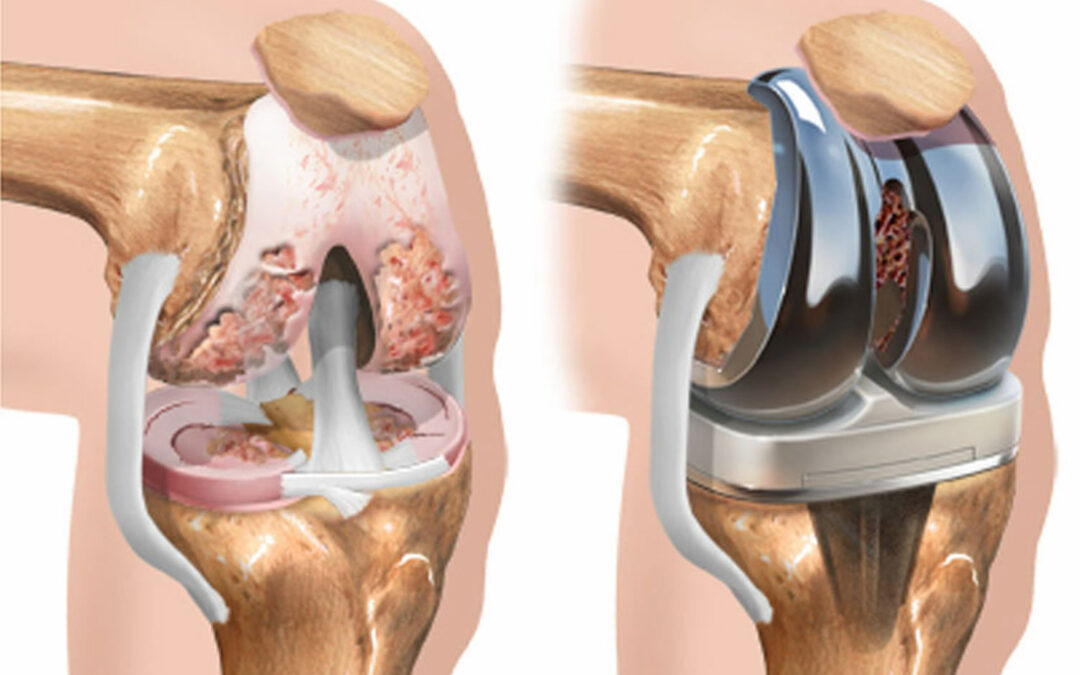Knee replacement, also known as Arthroplasty, is a common surgical procedure where the orthopaedic surgeon will replace the damaged parts of the knee joint with artificial implants (metal or ceramic prostheses). Today, the advancements in surgical techniques lead to faster recovery in patients, with the option of the latest sturdy implants offering pain-free stability and comfort for years.
When is the right time for Knee Replacement Surgery?
Usually, the alarming symptoms of arthritis patients enable doctors to detect the condition and determine the right time to undergo replacement surgery. Some of the significant signs include;
- Severe pain and stiffness in the joint affecting routine activities such as walking, climbing stairs or getting up from the chair/bed.
- Constant lump-sized swelling in the joint.
- Nagging knee pain impacting resting hours or affecting sleep schedule
- Deformity in the knee if the joint is bowed or twisted.
- When medications and physical therapy haven’t helped in the treatment.
Preparation before the Joint Replacement procedure
- Joint replacement is a 90% planned procedure with an understanding between doctor and patient. In other cases, a surgery might be required under any emergency or accidental conditions.
- The doctor will explain the entire procedure before the surgery and consult certain specialists for a physical examination if the patient is having a chronic disease such as high blood pressure, diabetes.
- The patient will be asked to sign a consent form permitting to do the procedure.
- The patient must let the doctor know about sensitivity to any allergic medications, anaesthetic agents, prescribed medications, herbal supplements.
During the procedure
Knee replacement surgery is performed under anaesthesia sedation, where the anesthesiologist will simultaneously monitor a patient’s heart rate, blood pressure, breathing, and blood oxygen levels throughout the operation. A small incision is made to locate the damaged parts of the knee joint and replace these with artificial implants made up of metal, plastic or ceramic materials. The parts are fixed with screws ensuring the joint doesn’t dislocate in the near future. The incision will be closed with stitches that are removed by the surgeon in an outpatient procedure after 10-15 days of the surgery.
Post-Surgical Care at the Hospital
After the surgery, the patient will be taken to the recovery room for observation. One has to stay for 3 to 5 days in a hospital where the surgeon and physiotherapist will guide you to perform certain exercises to regain the range of motion with the new joint. Pain medications will make the practice easy. During hospitalization, the patient and family members are provided with detailed instructions, exercise plan, diet chart, and medications that need to be followed during the recovery phase.
Recovery at Home
Once discharged from the hospital, the patient has to follow some specific instructions and precautions including:
- Keeping the surgical area protected, clean and dry following the bathing instructions.
- Keeping the operated leg in an elevated position to reduce swelling.
- Taking medications and calcium supplements on time.
- Ensuring to consume a rich and nutritious diet as per the doctor’s advice.
- Driving and aerobic activities are restricted for a few weeks; low-intensity exercises such as walking can be performed with braces or walkers.
- Ensuring to make changes in the home including installing handrails in the staircase, shower bench or chair, raised toilet seat, removing carpets or electric cords, etc.
- Taking regular physical therapy sessions during the entire recovery period to strengthen the muscles and increase mobility.
Consult your doctor if unusual bleeding or discharge is noticed from the operated site or if you observe discomfort, abnormal pain or inflammation around the new joint.
.



Recent Comments